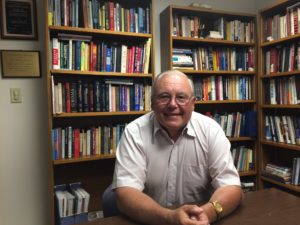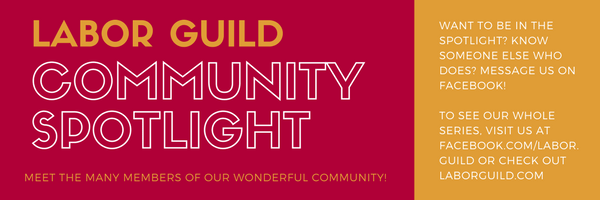Guild Community Spotlight: David Kowalski
Throughout the month of August, we’ll be learning about one of the key ingredients that makes Guild School special: our faculty! Check out the blog each week for interviews with instructors and inside information about their Fall Term courses.
POWER AND STRUGGLE: The Forces that Shaped the Labor Movement
Taught by David Kowalski, Guild Board Member, Retired President, UWUA Local #318
Main purpose of the class: To teach union members where we came from and why we exist
Who should take it: Anyone that holds a union card or wants to learn the essentials of union history
Course style: Lecture
When did you first get involved with the Guild?
“My history with the Guild starts in the 1980s, when I was elected as the president of a small union of 57 people of the then Boston Gas Co. I found out quickly that I was routinely getting my hat handed to me.”
After becoming a leader in his union, Kowalski realized that his ideas about how to get things done and win grievances for his members were completely unrealistic. He knew he needed to do something, so he started taking classes at the Guild with two of his Board members. Once here, he was “welcomed with open arms” by Joe Faherty and Father Boyle, who sparked the 40+-year relationship he would have with the Guild. Kowalski says that for many years he devoured every class that was being offered, and through those classes found out about opportunities for further education. Despite disliking school as a teenager, he eagerly completed the Labor Studies program at UMass Boston and a graduate program in mediation. He also maintained a friendship with his mentor, Paul McCarthy (instructor for this term’s Collective Bargaining double course), who supported him and urged him to teach at the Guild.
How did the idea for this class come about?
“I thought long and hard about what I wanted to teach, and the first question I asked myself was: ‘what do you want your students to know?’ After all my studies, the one thing I did not have a good understanding of is where unions came from and how our history developed. This was never formerly taught to me and was something I thought each union member ought to know.” So, Kowalski did a ton of reading to put together a class that would help students understand the wide number of systems and factors that have made unions the way they are today.
“What’s unique about my class is I look through many lenses: economic, labor, regulatory, government, and judiciary.” By bringing all of this together, Kowalski presents a number of frameworks and helps students to understand the repetitive nature of our history.
What does the class cover?
The class moves all the way from the 1500s in Britain to the 1930s in the United States, with the purpose of understanding the connection between history and the present. “Even though it stops in the 1930s, a lot of the teachings can be drawn out through today because things are repetitive. The nature of history is cyclical.”
What would you tell students who are thinking about taking this class?
“Even though I’m on faculty here, I’m not a teacher. I’m a practitioner. I’m going to tell you the story about us. The only thing I hope you get out of this class is the ability to look at labor in a new way. I don’t care if you take notes or not, I just want you to listen and emerge with a way of thinking differently about what’s going on.”
Join Our Mailing List
For Guild news, Labor School updates, Workshops, and CGA information.

